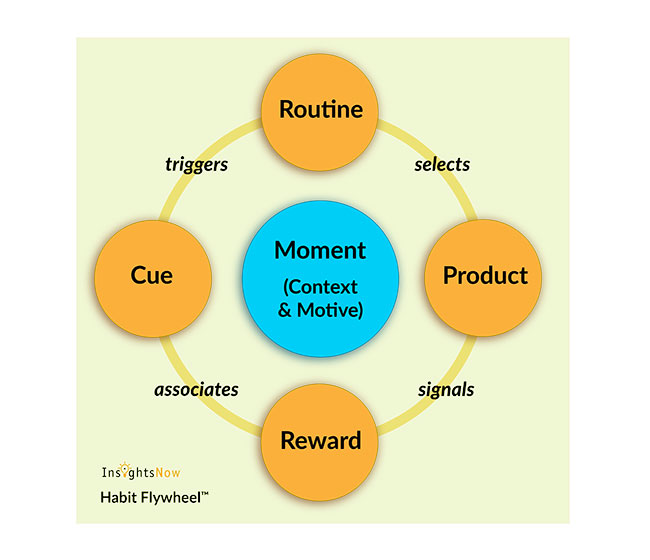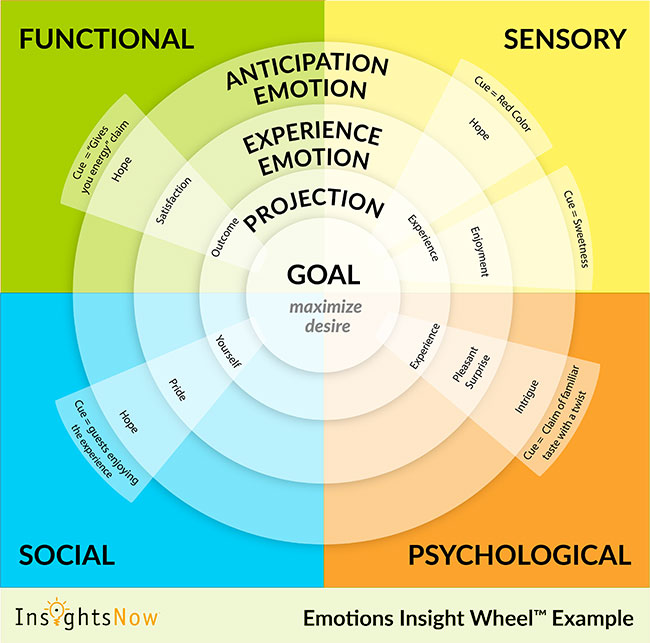SPONSORED CONTENT
Behavioral frameworks build knowledge in how to apply new platforms and tools
 Dave Lundahl
Dave Lundahl
CEO, InsightsNow
What an exciting time to be a marketing researcher. Over the past 20 years we have seen technology open the door for broader and deeper insights into human behavior. We first saw huge advancements in survey research capabilities. Next mobile technology enabled researchers to capture people in moments of experience. Social media then provided the capability to listen to millions of conversations. Video is enabling us to record behaviors and reactions to stimuli in moments of experience. Artificial intelligence is further advancing our profession to be able to accurately measure emotions, gauge human reactions and discover underlying motivations. Welcome to the world of behavioral research!
The marketing research industry has always espoused and aspired to be behavioral. Yet we still see researchers overpromising and underdelivering in providing true behavioral insights. So with all these technologies yielding new platforms and tools, why the gap? What we believe has been missing is a more fundamental understanding of behavioral science and the respective know-how to apply new technologies.
Along with technology, behavioral science has also made great advancements. However, these scientific advancements have been mostly tied up in academic literature. Apart from the occasional best-selling book, behavioral science becomes actionable when it can be distilled down into its essence. This distillation for application occurs through the formation and communication of behavioral frameworks.
At InsightsNow we have created a knowledge base comprised of an ecosystem of behavioral frameworks to close the gap between promise and delivery of insights. These frameworks have changed how we think about research design. In conjunction with information technology advancements, they have helped us raise the research bar to know when and how to apply new platforms and tools. Below are a few behavioral framework examples, how they are being applied as well as a few concluding remarks about what we believe is the future of behavioral research.

The Habit Flywheel™
In 2016 we distilled behavioral science into a framework we call The Habit Flywheel™. This framework focuses on four aspects of product experiences which strengthen habits through repeat experiences or lead to habit disruption. In a specific moment, a cue is needed to trigger a routine for which you select products. Those products have qualities called product cues which signal a reward which could be associated with the cues which triggered the routine.
Effective marketing campaigns are those which reinforce triggers for routines and build stronger associations between the reward and the cue. Marketing campaigns can drive more habitual use of products among brand fans through these types of reinforcements. They can also serve to disrupt habits when you aim to displace a market leader with a new product. The Habit Flywheel is also a useful framework for innovation teams to strategically understand how to design and develop products to fit within exiting routines, to change routines for competitive advantage and/or to build into product qualities that signal benefits of value to consumers. Therefore, this behavioral framework provides a basis for marketing, innovation and product development teams. It helps these decision makers to set strategic objectives that are more behavioral. They provide a road map to know how to provide behavioral insights for business decisions.
The Emotions Insight Wheel™
Behavioral frameworks such as the Habit Flywheel also form the basis for an ecosystem of knowledge through framework integration. For example, we have found The Habit Flywheel integrates well with a framework we call the Emotions Insight Wheel™. Together these two frameworks help us understand how emotions contribute to motivating consumer action related to habitual use of products.
For example, when consumers habitually use products, they tend to be motivated by emotions such as desire, which are felt in the context of moments. These feelings are elicited from cues in the environment (e.g., ad or time-of-day trigger) or cues from the product itself (e.g., package shape, product color). These feelings are based on cues and emotions “tagged” to past sensory memories. Cues and emotion tags are stored within sensory memories along with the context and/or routines of past experiences. Therefore, context and routines matter! They make sensory memories and respective cues cognitively accessible to motivate habits through the elicitation of feelings. Likewise, when the context or routine is changed, habits can become disrupted due to the lack of sensory memories and respective absence of feelings that motivate.
When disruption occurs, new opportunities are created for marketers to motivate product trials by eliciting feelings such as intrigue for a new experience or hope that a new benefit will fulfill a latent need. Further, during product trials emotions play a role in the formation of new sensory memories and respective cues which in turn initiate new habits. The stronger the new emotional tag, the stronger the motive to trigger a new or improved routine or to signal new expectations of a future benefit or an adverse experience to avoid.
For example, experiencing emotions such as satisfaction, enjoyment or liking can lead to new product cues that signal a functional benefit (e.g., gives me energy). Appealing to sensory experiences (e.g., sweet taste) can become a powerful product cue, strengthening the association between product use and reward. Likewise, the association of a product cue (e.g., color or shape) with a positive social benefit (e.g., product preferred by guests) can form a new sensory memory by eliciting a feeling such as pride. All these sensory memories can lead to the formation of new habits triggered by cues within the context of specific moments. Understanding how these two frameworks fit together helps in the design of behavioral research and interpreting of results for behavioral insights. They raise the level of knowledge to close the gap between behavioral insights promise and delivery.

The future of behavioral research
Behavioral frameworks like these are essential application tools for marketing researchers wanting to distill behavioral science into knowledge. This knowledge closes the gap between the promise of insights to decision makers and the delivery. These frameworks help to uncover the human behind the behavior, revealing unexpected human truths which lead to faster and better decision-making for marketers, innovation teams and the developers of consumer goods and services. As technology marches forward, behavioral frameworks are playing a bigger and bigger role. We believe frameworks are the key to the future of behavioral research, helping marketing researchers know when and how to apply the many new platforms and emerging tools which should be included in the researcher’s toolbox. For these reasons, shifting your approach to research that is more behavioral is an essential part of the future of the marketing research industry. By advancing these frameworks and integrating them into the growing ecosystem of frameworks, we will be able to close the gap between promising insights and delivering them, elevating our collective knowledge to support faster, more informed business decision-making.

www.insightsnow.com
info@insightsnow.com
541-757-1404
